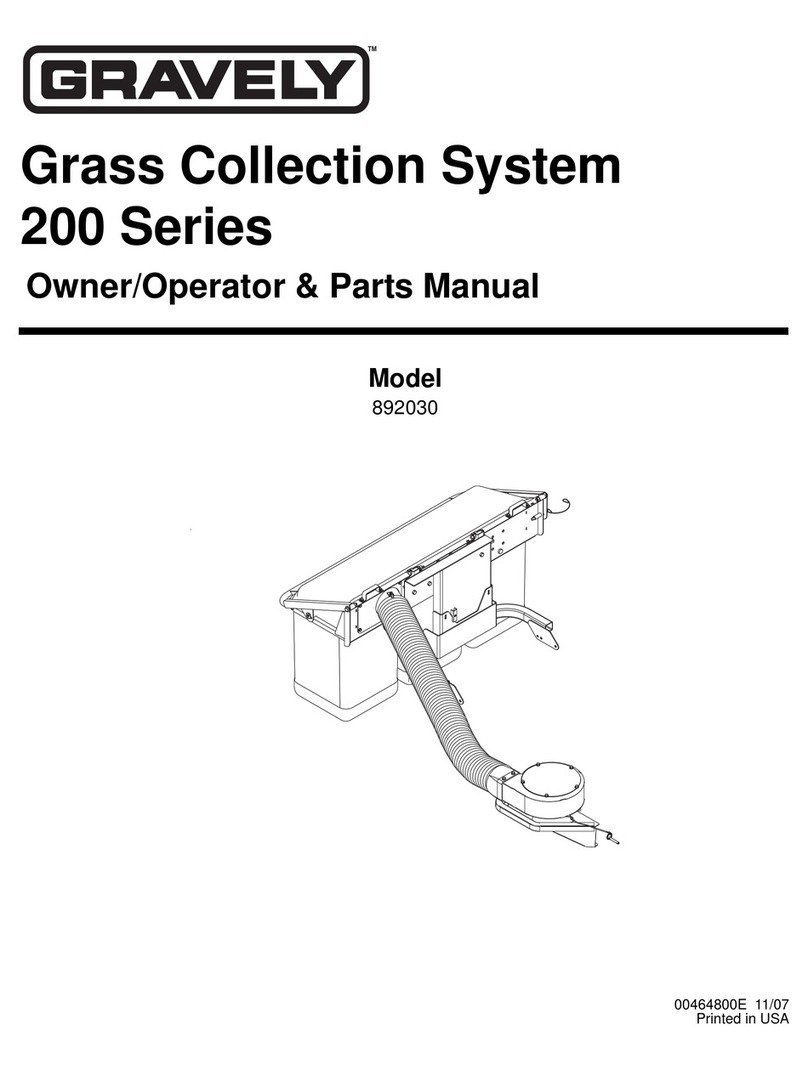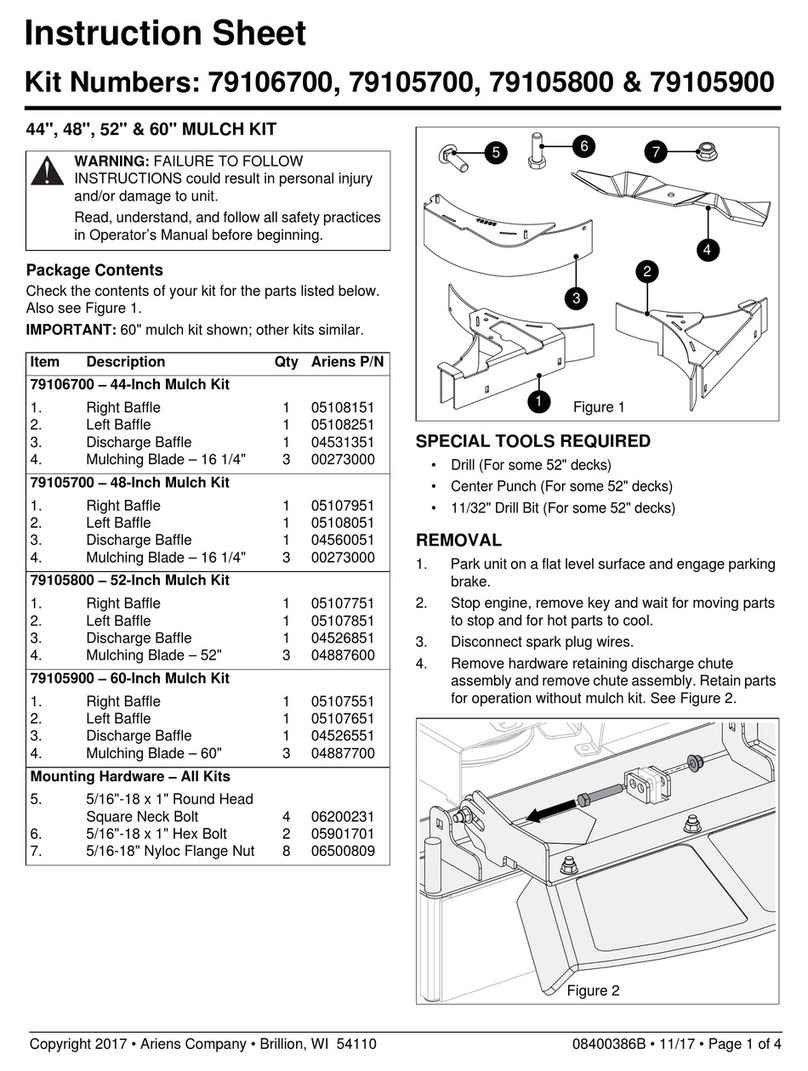
GB - 11
NEVER operate unit after or during the use of
medication, drugs or alcohol. Safe operation requires
your complete and unimpaired attention at all times.
NEVER allow anyone to operate the unit when their
alertness or coordination is impaired.
DO NOT operate unit without wearing adequate outer
garments. Wear adequate safety gear and protective
gloves. Wear proper footwear to improve footing on
slippery surfaces.
Protect eyes, face, and head from objects that may be
thrown from unit. Wear appropriate hearing protection.
Avoid sharp edges. Sharp edges can cut. Moving parts
can cut or amputate fingers or a hand. Wear gloves to
service unit when handling sharp edges.
ALWAYS keep hands away from any pinch points.
ALWAYS keep hands and feet away from all moving
parts during operation. Moving parts can cut off body
parts.
DO NOT touch unit parts which might be hot from
operation. Allow parts to cool before attempting to
maintain, adjust, or service.
Keep the operator platform free of dirt, grease, or mud.
NEVER place feet under the platform.
Do not tie yourself to the unit.
Controls
Stop completely before reversing.
Never jerk the control levers. Always use a steady, even
action to achieve smooth control.
When using attachments, ensure that they are
attached correctly with latch pins engaged. Practice the
operation before beginning work.
Always be aware of obstructions that may cause injury
to operator or damage to the unit.
Avoid loss of control or tipping. Do not carry a load with
the lift arms raised. Always carry load close to ground.
Do not step off the platform when lift arms are raised.
Always ensure there is ample overhead clearance.
Keep alert with eyes fixed in direction of travel.
Do not travel with the arms in the raised position.
Maintenance
ALWAYS maintain unit in safe operating condition.
Damaged or worn out muffler can cause fire or
explosion.
Check the condition of the unit at the end of each day
and repair any damage.
ALWAYS block wheels and know all jack stands are
strong, secure and will hold weight of unit during
maintenance.
When performing service which requires arms to be
raised, make sure cylinder lock is engaged and secure.
Keep nuts and bolts tight and keep equipment in safe
operating condition.
Shut off engine before maintenance, adjustments, or
service (except where specifically recommended).
Allow hot parts to cool.
Keep unit free of dirt, stones, and other debris. Clean
up oil or fuel spills.
Storage
DO NOT store unit with fuel in the fuel tank inside a
building where any ignition sources are present. Allow
unit to cool completely.
ALWAYS clean unit before extended storage. See
Engine Manual for proper storage.
Battery
Avoid Electric Shock. DO NOT reverse battery
connections.
Explosive Gases! Poisonous battery fluid contains
sulfuric acid. Contact with skin, eyes, or clothing can
cause severe burns.
Battery posts, terminals and related accessories
contain lead and lead compounds, chemicals known in
the State of California to cause cancer and
reproductive harm. Wash hands after handling.
No flames. No sparks. No smoking near battery.
Always wear safety glasses and protective gear near
battery.
DO NOT TIP battery beyond a 45
o
angle in any
direction.
ALWAYS KEEP BATTERIES OUT OF REACH of
children.
Transport
Use extra care when loading or unloading unit onto
trailer or truck. Secure unit chassis to transport vehicle.
NEVER secure by rods or linkages that could be
damaged.
Always use the lifting lug at the top of the unit. Lift the
unit with an appropriate crane on the construction site.
Always use the tie-down lugs provided on each side of
the unit to secure the unit when transporting by truck or
trailer.
DO NOT transport with attachment in raised position.
Lower attachment when unit is parked or stored unless
the cylinder lock is used.
Attachments and Accessories
Use only attachments or accessories designed for your
unit.
To prevent tipping, DO NOT drive unit without
attachment when weight kit is installed. ALWAYS
remove weight kit when removing attachment.
ALWAYS install weight kit when installing an
attachment that requires weight kit.








































